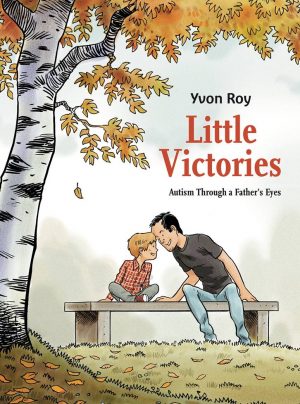Review by Ian Keogh
Clever narrative devices from Molly Naylor over the starting section of Lights, Planets, People! set a high sense of anticipation from the beginning. A group of young women are shown expecting a lecture from Maggie Hill, billed as an inspiring woman and an astronomer. The viewpoint then cuts to said Maggie in the toilets, bolstering her self-esteem and obviously concerned about being able to deliver a talk. Another switch shows Maggie with a therapist to whom she discloses the pressure of expectation she feels in having to give talks and the panic attacks they generate, before a leap forward again to the lecture hall where Maggie’s powerpoint presentation can’t be connected to the projection system. It’s an all-but faultless introduction, supplying a sympathetic character who’s achieved something, yet also leaving no doubt that a public persona isn’t always the true one.
Lizzy Stewart contributes greatly to the success of this opening, drawing Maggie with concerned expressions and awkward postures, occasionally accentuated by her literally being in the spotlight required for her lecture. That’s only the beginning of some intuitively human art requiring a number of styles, varied by mood and circumstance. Some illustrations are allegorical and others just practical.
With her planned lecture no longer possible, Maggie opts for a direct question and answer format from the start, and it opens doorways into her life and feelings. More are opened via conversation with the therapist. Naylor pitches Maggie’s character beautifully. At one point someone comments on the spectacular sunset, prompting a lengthy scientific explanation from Maggie, cut short with the repeated assertion that it looks nice. It conveys a complete understanding of her social awkwardness without having to know a specific condition.
Other astute insights follow as Maggie explains herself, and Naylor constantly steers the story into unexpected places, although all legitimately covered by the title. Naylor has some things to say, and Maggie is the perfect vehicle for saying them, and she’s thoroughly tested along the way by questions she’s asked. While there’s a lot to be learned, and considerable common sense on other topics, the heart of Lights, Planets, People! is the conditions Maggie has, which to a greater or lesser degree limit her life. From the outside it’s been a very successful life with much achieved, but the costs are accumulating, and we’re meeting Maggie at a crisis point. While she’s encouraging students in the lecture hall to ask questions, it’s something she only applies to her working life. Naylor and Stewart ensure we understand Maggie very well, but the sadness is that it appears to be better than she knows herself. They finish with a beautifully planned allegory.
Lights, Planets, People! is a precise character dissection with heart and emotional engagement, and it’s a really personal vision. Given the same broad topic no other creators would produce anything like what Naylor and Stewart have done. Don’t let Lights, Planets, People! slip between the cracks. It’s inspirational and makes a difference, and that’s something Maggie would be proud of.







